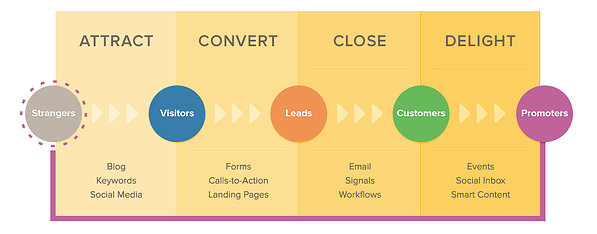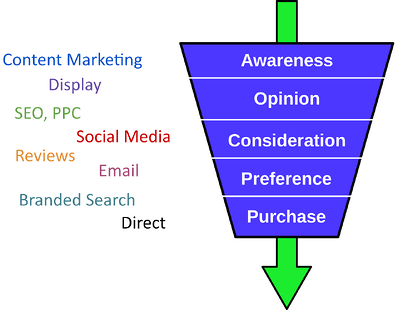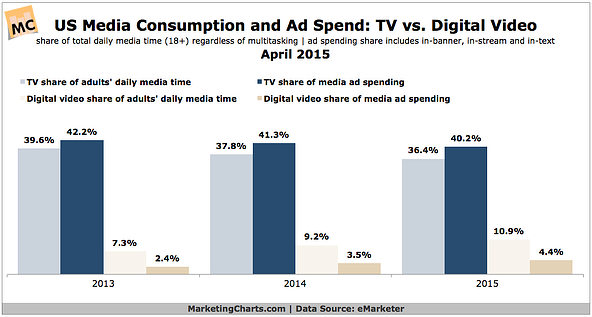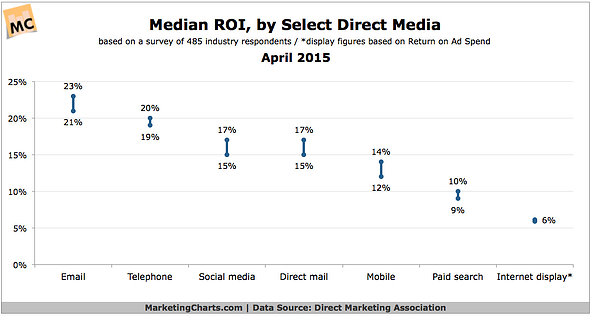Are you excited about the prospect of inbound marketing for your business, but afraid you won’t achieve a reasonable ROI?
Inbound marketing is considered the most effective form of digital marketing, but also the most expensive. With a minimum invest of at least $60,000 per year in agency and software costs, few can afford an inbound marketing plan unable to produce results.
There are many reasons an inbound marketing program won’t work for you. Below are the top reasons we’ve seen inbound marketing campaigns fall flat, and how they can be avoided.
1) You Haven’t Identified Your Buyer Personas
Inbound marketing requires adding value to a potential customer before they have purchased from you. This 1:1 relationship strengthens your bond with them, ultimately making you their first choice when they are ready to buy. To do this effectively, you must know your customer deeply.

Most small to medium businesses claim to know their customer well, but have never documented their knowledge in a way that can drive meaningful action. Creating buyer personas solves this problem.
Buyer personas are fictional representations of your primary customer types. Most businesses have three to five personas which accurately depict the vast majority of their customer base. Each buyer persona can be detailed on a single page. It tells the story of who they are, where they came from, and what they care most about. These customer “characters” bring a higher level of clarity to who your market is and how to speak to them.
There is ample documentation online for creating buyer personas for your business (including our own buyer persona blog post). Set a few hours aside to go through this exercise with your marketing team.
2) You Haven’t Articulated Your Buyer’s Pain Points
Soothing pain is one of the main drivers behind every purchase. This knowledge creates a major opportunity for all marketers. To develop an effective marketing plan, brands should begin with articulating a prospect’s pain points, then create messaging to address those specific pain points.
A company’s guarantee can satisfy the psychological barrier associated with pain. For example, a product’s “Lifetime Guarantee” or Dominos’ “30 Minutes Or It’s Free” guarantee directly address a customer’s concerns. These guarantees are bold, relevant to their target audience, and, most importantly, ease pain.
Content marketing anticipates one of the many questions or concerns a potential customer could have, then writes detailed content around that topic. For example, an HR Consulting firm might produce an annual report on leadership development budgets to answer their target market’s pain around leadership investment costs.
The more a brand understands a prospect’s pain, the more their messaging will resonate, and the more likely they are to win the sale.
3) You Don’t Truly Believe In The Inbound Methodology
The inbound methodology uses the following four steps: 1) attract, 2) convert, 3) close, 4) delight.

The first step is attracting new visitors onto your site or social profile. Converting a visitor means capturing their contact information, enabling you to reach back out to them. Closing occurs when a prospect becomes a customer. Delighting a customer involves offering them an exceptional experience.
Weeks, months, or years could pass between the time you first attract a visitor to your website and the day you close them as a customer. Once you close them as a customer, your work is far from done. Delivering on the promise of your product while delivering exceptional customer service will turn your customers into delighted promoters, which in turn drives new referral leads.
While the inbound methodology makes theoretical sense to many marketers and business owners, most can’t practice the patience necessary to see results. Developing and managing a successful inbound marketing program is a long-term play which takes years, not months. You must be in it for the long haul.
4) You Aren’t Nurturing Effectively
Turning a cold lead into a new customer takes time and effort. Companies with ineffective nurturing try to automate too much of the nurturing process or apply the wrong techniques at the wrong times.
To develop an effective nurturing campaign, break out the buying funnel into stages, then craft a nurturing approach appropriate for each stage. Your nurturing plan should start with turning cold prospects into warm prospects. Then, warm prospects into hot prospects who are ready to purchase.

The right formula of messaging, contact frequency, and contact method must be uncovered to nurture effectively.
5) You Aren’t Integrating Outbound Tactics To Support Inbound Tactics
The end goal of any marketing campaign is to sell more. Therefore, no tactic, whether online or offline, should be excluded if it can help achieve this goal.
Many digital marketers believe all marketing efforts can be done online. To these marketers, offline and outbound tactics are out of touch with today’s marketplace. This notion is both inaccurate and myopic.
Did you know TV accounts for 36% of adults’ daily major media time, compared to just 11% for online video (click to Tweet)?

Or that telephone campaigns have an ROI as high as 20%, only slightly below email marketing’s ROI of 21-23%? And despite all the fanfare, social media direct response ROI falls right in line with direct mail at 15-17% (click to Tweet).

If your job is to market a business and grow sales, all tactics should be considered. Test, measure, and blend tactics to find the combination which works best for you.
Read more about unlocking your digital marketing formula.
6) You Aren’t Blogging With A Purpose
Blog content serves to attract new qualified visitors or build reputation with existing subscribers. Implementing a blogging campaign without the intent to do either of these things is a hopeless and costly endeavour.
Blogs meant to attract visitors do so through high search engine rankings and/or social discovery. To get blogs ranked, you must write for the keyword you wish to rank. At a minimum, the post title and content should include that keyword. The keyword you target should be based on what your persona would search to solve a specific problem.
To get blogs shared on social channels, your post must have substance and resonate with the reader. Blogs under 500 words with recycled content found across the internet will never get shared. Your blog post must offer a new perspective or be considered a comprehensive resource on a topic.
To build reputation, your blog must demonstrate expertise and offer high value to the reader. Show your reader you aren’t a “one-trick pony,” but instead, will offer insightful, valuable content over time.
Read more about crafting a winning content strategy.
////
Want to read more posts like this one? Check out our recent post on the top reasons for digital marketing failure.





Agree, disagree, or just have something to add?
Leave a comment below.